-
Executive Summary
-
Market Introduction
-
Market Definition
-
Scope of the
- Research
- Assumptions & Limitations
-
Study
-
Objectives
-
Markets Structure
-
Key Takeaways
-
Market Research Methodology
-
Research Process
-
Primary Research
-
Secondary Research
-
Market Size Estimation
-
Forecast Model
-
Market Dynamics of the Global Acrylic
-
Surface Coating Market
-
Introduction
-
Drivers
-
Restraints
-
Opportunities
-
Challenges
-
Trends/Chemistry
-
Market Factor Analysis of the Global Acrylic Surface
-
Coating Market
-
Supply Chain Analysis
- Raw Material Suppliers
- Distributors/Retailers/Wholesalers/E-Commerce
- End User
- Bargaining
- Bargaining Power
- Threat of Substitutes
- Intensity of Rivalry
-
Manufacturers/Producers
-
Porter’s Five Forces Analysis
-
Threat of New Entrants
-
Power of Buyers
-
of Suppliers
-
Pricing
-
Analysis
-
Global Acrylic Surface Coating Market, by Substrate
-
Introduction
-
Concrete
- Market Estimates & Forecast,
- Market Estimates & Forecast, by Region, 2020-2027
-
Metal
- Market Estimates
-
Market Estimates & Forecast, 2020-2027
-
& Forecast, by Region, 2020-2027
-
Plastic
- Market Estimates & Forecast,
- Market Estimates & Forecast, by Region, 2020-2027
-
Wood
- Market Estimates
-
Market Estimates & Forecast, 2020-2027
-
& Forecast, by Region, 2020-2027
-
Others
- Market Estimates & Forecast,
- Market Estimates & Forecast, by Region, 2020-2027
-
Global Acrylic Surface Coating Market, by Chemistry
-
Introduction
-
Waterborne
- Market
- Market Estimates & Forecast,
-
Estimates & Forecast, 2020-2027
-
by Region, 2020-2027
-
Solvent-Borne
- Market Estimates &
-
Market Estimates & Forecast, 2020-2027
-
Forecast, by Region, 2020-2027
-
Powder
- Market Estimates &
-
Market Estimates & Forecast, 2020-2027
-
Forecast, by Region, 2020-2027
-
Radiation Curable
- Market Estimates
-
Market Estimates & Forecast, 2020-2027
-
& Forecast, by Region, 2020-2027
-
Global Acrylic Surface
-
Coating Market, by End-Use Industry
-
Introduction
- Market Estimates & Forecast, 2020-2027
-
Building & Construction
-
Market Estimates & Forecast, by Region, 2020-2027
-
Automotive
- Market Estimates
-
& Transportation
-
Market Estimates & Forecast, 2020-2027
-
& Forecast, by Region, 2020-2027
-
Furniture
- Market Estimates & Forecast,
- Market Estimates & Forecast, by Region, 2020-2027
-
Aerospace & Defense
- Market Estimates & Forecast, 2020-2027
-
Market Estimates & Forecast, by Region, 2020-2027
-
Electrical & Electronics
-
Market Estimates & Forecast, 2020-2027
-
Market Estimates & Forecast, by Region, 2020-2027
-
Marine
- Market Estimates
- Market Estimates & Forecast, by
-
& Forecast, 2020-2027
-
Region, 2020-2027
-
Others
- Market Estimates & Forecast, 2020-2027
-
Market Estimates & Forecast, by Region, 2020-2027
-
Global Acrylic Surface Coating Market, by Region
-
Introduction
-
North America
- Market Estimates &
- Market Estimates & Forecast,
- Market Estimates & Forecast,
- Market Estimates & Forecast,
- US
- Canada
-
Forecast, 2020-2027
-
by Substrate, 2020-2027
-
by Chemistry, 2020-2027
-
by End-Use Industry, 2020-2027
-
Forecast, by Substrate, 2020-2027
-
& Forecast, by End-Use Industry, 2020-2027
-
& Forecast, 2020-2027
-
Market Estimates & Forecast, by Substrate, 2020-2027
-
by Chemistry, 2020-2027
-
Market Estimates & Forecast,
-
Market Estimates & Forecast, by End-Use Industry, 2020-2027
-
Europe
-
& Forecast, by Substrate, 2020-2027
-
& Forecast, by End-Use Industry, 2020-2027
-
France
-
Estimates & Forecast, 2020-2027
-
& Forecast, by Chemistry, 2020-2027
-
Forecast, by Substrate, 2020-2027
-
& Forecast, by End-Use Industry, 2020-2027
-
Spain
-
Estimates & Forecast, 2020-2027
-
& Forecast, by Chemistry,2020-2027
-
& Forecast, by Chemistry,2020-2027
-
by Substrate,2020-2027
-
Market Estimates & Forecast,
-
Market Estimates & Forecast, by Substrate,
-
Market Estimates & Forecast, by Chemistry,
-
Market Estimates & Forecast, by End-Use Industry,
-
Germany
-
Market Estimates & Forecast, 2020-2027
-
Market Estimates
-
Market Estimates & Forecast, by Chemistry, 2020-2027
-
Market Estimates
-
Market
-
Market Estimates & Forecast, by Substrate, 2020-2027
-
Market Estimates
-
Market Estimates & Forecast, by End-Use Industry,
-
Italy
-
Market Estimates & Forecast, 2020-2027
-
Market Estimates &
-
Market Estimates & Forecast, by Chemistry, 2020-2027
-
Market Estimates
-
Market
-
Market Estimates & Forecast, by Substrate,2020-2027
-
Market Estimates
-
Market Estimates & Forecast, by End-Use Industry,2020-2027
-
UK
-
Market Estimates & Forecast, 2020-2027
-
Market Estimates & Forecast, by Substrate,2020-2027
-
Market Estimates
-
Market Estimates & Forecast, by End-Use Industry,2020-2027
-
Russia
-
Market Estimates & Forecast, 2020-2027
-
Market Estimates & Forecast,
-
Market Estimates & Forecast, by Chemistry,2020-2027
-
by End-Use Industry,2020-2027
-
Estimates & Forecast, by Substrate, 2020-2027
-
Estimates & Forecast, by End-Use Industry, 2020-2027
-
Rest of Europe
-
Market Estimates & Forecast, 2020-2027
-
Market Estimates & Forecast,
-
Poland
-
Market Estimates & Forecast,
-
Market
-
Market Estimates & Forecast, by Chemistry,
-
Market
-
Market Estimates & Forecast, by Substrate,
-
Market Estimates & Forecast, by Chemistry, 2020-2027
-
by End-Use Industry, 2020-2027
-
Market Estimates & Forecast,
-
Asia-Pacific
- Market Estimates & Forecast, 2020-2027
-
Market Estimates & Forecast, by Substrate, 2020-2027
-
Market Estimates & Forecast, by Chemistry, 2020-2027
-
Market Estimates & Forecast, by End-Use Industry, 2020-2027
-
China
-
Market Estimates & Forecast, 2020-2027
-
Market Estimates & Forecast, by Substrate,
-
Market Estimates & Forecast, by Chemistry, 2020-2027
-
by End-Use Industry, 2020-2027
-
& Forecast, 2020-2027
-
& Forecast, by Chemistry, 2020-2027
-
& Forecast, by Substrate, 2020-2027
-
Market Estimates & Forecast,
-
India
-
Market Estimates
-
Market Estimates & Forecast, by Substrate, 2020-2027
-
Market Estimates
-
Market Estimates & Forecast, by End-Use Industry,
-
Japan
-
Market Estimates & Forecast, 2020-2027
-
Market Estimates
-
Market Estimates & Forecast, by Chemistry,
-
Market Estimates & Forecast, by End-Use Industry, 2020-2027
-
Australia & New Zealand
-
& Forecast, by Substrate, 2020-2027
-
Market Estimates & Forecast, 2020-2027
-
Market Estimates
-
Market Estimates & Forecast, by Chemistry,
-
Market Estimates & Forecast, by End-Use Industry, 2020-2027
-
Rest of Asia-Pacific
-
& Forecast, by Substrate, 2020-2027
-
Market Estimates & Forecast, 2020-2027
-
Market Estimates
-
Market Estimates & Forecast, by Chemistry,
-
Market Estimates & Forecast, by End-Use Industry, 2020-2027
-
Middle East & Africa
- Market Estimates & Forecast, 2020-2027
-
Market Estimates & Forecast, by Substrate, 2020-2027
-
Market Estimates & Forecast, by Chemistry, 2020-2027
-
Market Estimates & Forecast, by End-Use Industry, 2020-2027
-
Market Estimates & Forecast, 2020-2027
-
& Forecast, by Chemistry, 2020-2027
-
Forecast, by Substrate, 2020-2027
-
& Forecast, by End-Use Industry, 2020-2027
-
North Africa
-
Market Estimates & Forecast, 2020-2027
-
Estimates & Forecast, by Chemistry, 2020-2027
-
Industry, 2020-2027
-
Estimates & Forecast, by Substrate, 2020-2027
-
Estimates & Forecast, by End-Use Industry, 2020-2027
-
Rest of Middle East & Africa
-
by Substrate, 2020-2027
-
GCC
-
Market Estimates & Forecast, by Substrate, 2020-2027
-
Market Estimates
-
Market Estimates & Forecast, by End-Use Industry,
-
Israel
-
Market Estimates & Forecast, 2020-2027
-
Market Estimates &
-
Market Estimates & Forecast, by Chemistry, 2020-2027
-
Market Estimates
-
Market Estimates & Forecast, by Substrate,
-
Market
-
Market Estimates & Forecast, by End-Use
-
South Africa
-
Market Estimates & Forecast,
-
Market
-
Market Estimates & Forecast, by Chemistry,
-
Market
-
Market Estimates & Forecast, 2020-2027
-
Market Estimates & Forecast,
-
Market Estimates & Forecast, by Chemistry, 2020-2027
-
by End-Use Industry, 2020-2027
-
Market Estimates & Forecast,
-
Latin America
- Market Estimates & Forecast, 2020-2027
-
Market Estimates & Forecast, by Substrate, 2020-2027
-
Market Estimates & Forecast, by Chemistry, 2020-2027
-
Market Estimates & Forecast, by End-Use Industry, 2020-2027
-
Brazil
-
Estimates & Forecast, by Chemistry, 2020-2027
-
Industry, 2020-2027
-
Forecast, 2020-2027
-
Market Estimates & Forecast, 2020-2027
-
Market Estimates & Forecast, by Substrate,
-
Market
-
Market Estimates & Forecast, by End-Use
-
Argentina
-
Market Estimates &
-
Market Estimates & Forecast, by Substrate, 2020-2027
-
by Chemistry, 2020-2027
-
Market Estimates & Forecast,
-
Market Estimates & Forecast, by End-Use Industry, 2020-2027
-
Estimates & Forecast, by Chemistry, 2020-2027
-
Industry, 2020-2027
-
& Forecast, 2020-2027
-
Forecast, by Chemistry, 2020-2027
-
Mexico
-
Market Estimates & Forecast, 2020-2027
-
Market Estimates & Forecast, by Substrate,
-
Market
-
Market Estimates & Forecast, by End-Use
-
Rest of Latin America
-
Market Estimates
-
Market Estimates & Forecast, by Substrate, 2020-2027
-
Market Estimates &
-
Market Estimates & Forecast, by End-Use Industry, 2020-2027
-
Company Landscape
-
Introduction
-
Market Strategies
-
Key Development Analysis (Expansion/Merger & Acquisitions/Joint
-
Venture/New Product Development/Agreement/Investment)
-
Company Profiles
-
Arkema Group
- Financial Updates
- Product/Business Segment Overview
- Key Strategies
- SWOT Analysis
-
Company Overview
-
Key Developments
-
PPG Industries, Inc.
- Financial Updates
- Product/Business Segment Overview
- Key Strategies
- SWOT Analysis
-
Company Overview
-
Key Developments
-
Dunn-Edwards Corporation
- Company Overview
- Key
- Key Developments
-
Financial Updates
-
Product/Business Segment Overview
-
Strategies
-
SWOT Analysis
-
Sika AG
- Company Overview
- Financial Updates
- Key Developments
- SWOT Analysis
-
Product/Business Segment Overview
-
Key Strategies
-
Wacker
- Financial Updates
- Product/Business Segment Overview
- Key Strategies
- SWOT Analysis
-
Chemie AG
-
Company Overview
-
Key Developments
-
Axalta Coating Systems
- Financial Updates
- Product/Business Segment Overview
- Key Strategies
- SWOT Analysis
-
Company Overview
-
Key Developments
-
Akzo Nobel N.V.
- Company
- Financial Updates
- Product/Business Segment Overview
- Key Developments
- SWOT Analysis
-
Overview
-
Key Strategies
-
RPM
- Company Overview
- Key
- Key Developments
-
International Inc.
-
Financial Updates
-
Product/Business Segment Overview
-
Strategies
-
SWOT Analysis
-
NIPSEA
- Company Overview
- Product/Business
- Key Strategies
- Key Developments
-
GROUP
-
Financial Updates
-
Segment Overview
-
SWOT Analysis
-
BASF SE
- Company Overview
- Financial Updates
- Key Developments
- SWOT Analysis
-
Product/Business Segment Overview
-
Key Strategies
-
Conclusion
-
LIST OF TABLES
-
Global
-
Acrylic Surface Coating Market: by Region, 2020-2027
-
North
-
America: Acrylic Surface Coating Market, by Country, 2020-2027
-
Table 3
-
Europe: Acrylic Surface Coating Market, by Country, 2020-2027
-
Table 4
-
Asia-Pacific: Acrylic Surface Coating Market. by Country, 2020-2027
-
Table
-
Middle East & Africa: Acrylic Surface Coating Market, by
-
Country, 2020-2027
-
Latin America: Acrylic Surface
-
Coating Market, by Country, 2020-2027
-
Global Acrylic
-
Surface Coating Market Substrate Market, by Regions, 2020-2027
-
Table 8
-
North America: Acrylic Surface Coating Market Substrate Market, by Country,
-
Europe: Acrylic Surface Coating Market
-
Substrate Market, by Country, 2020-2027
-
Table10 Asia-Pacific:
-
Acrylic Surface Coating Market Substrate Market, by Country, 2020-2027
-
Table11
-
Middle East & Africa: Acrylic Surface Coating Market Substrate Market,
-
by Country, 2020-2027
-
Table12 Latin America: Acrylic Surface
-
Coating Market Substrate Market, by Country, 2020-2027
-
Table13
-
Global Acrylic Surface Coating Market Chemistry Market, by Regions, 2020-2027
-
Table14 North America: Acrylic Surface Coating Market Chemistry
-
Market, by Country, 2020-2027
-
Table15 Europe: Acrylic Surface
-
Coating Market Chemistry Market, by Country, 2020-2027
-
Table16
-
Asia-Pacific: Acrylic Surface Coating Market Chemistry Market, by Country,
-
Table17 Middle East & Africa: Acrylic Surface
-
Coating Market Chemistry Market, by Country, 2020-2027
-
Table18
-
Latin America: Acrylic Surface Coating Market Chemistry Market, by Country,
-
Table19 Global Acrylic Surface Coating Market End-Use
-
Industry Market, by Regions, 2020-2027
-
Table20 North America:
-
Acrylic Surface Coating Market End-Use Industry Market, by Country, 2020-2027
-
Table21 Europe: Acrylic Surface Coating Market End-Use Industry
-
Market, by Country, 2020-2027
-
Table22 Asia-Pacific: Acrylic
-
Surface Coating Market End-Use Industry Market, by Country, 2020-2027
-
Table23
-
Middle East & Africa: Acrylic Surface Coating Market End-Use Industry
-
Market, by Country, 2020-2027
-
Table24 Latin America: Acrylic
-
Surface Coating Market End-Use Industry Market, by Country, 2020-2027
-
Table25
-
Global Substrate Market, by Region, 2020-2027
-
Table26 Global
-
Chemistry Market, by Region, 2020-2027
-
Table27 Global End-Use
-
Industry Market, by Region, 2020-2027
-
Table28 North America:
-
Acrylic Surface Coating Market, by Country, 2020-2027
-
Table29 North
-
America: Acrylic Surface Coating Market, by Substrate, 2020-2027
-
Table30
-
North America: Acrylic Surface Coating Market, by Chemistry, 2020-2027
-
Table31 North America: Acrylic Surface Coating Market, by End-Use
-
Industry, 2020-2027
-
Table32 Europe: Acrylic Surface Coating
-
Market, by Country, 2020-2027
-
Table33 Europe: Acrylic Surface
-
Coating Market, by Substrate, 2020-2027
-
Table34 Europe: Acrylic
-
Surface Coating Market, by Chemistry, 2020-2027
-
Table35 Europe:
-
Acrylic Surface Coating Market, by End-Use Industry, 2020-2027
-
Table36
-
Asia-Pacific: Acrylic Surface Coating Market, by Country, 2020-2027
-
Table37 Asia-Pacific: Acrylic Surface Coating Market, by Substrate,
-
Table38 Asia-Pacific: Acrylic Surface Coating
-
Market, by Chemistry, 2020-2027
-
Table39 Asia-Pacific:
-
Acrylic Surface Coating Market, by End-Use Industry, 2020-2027
-
Table40
-
Middle East & Africa: Acrylic Surface Coating Market, by Country, 2020-2027
-
Table41 Middle East & Africa: Acrylic Surface Coating Market,
-
by Substrate, 2020-2027
-
Table42 Middle East & Africa:
-
Acrylic Surface Coating Market, by Chemistry, 2020-2027
-
Table43
-
Middle East & Africa: Acrylic Surface Coating Market, by End-Use Industry,
-
Table44 Latin America: Acrylic Surface Coating
-
Market, by Country, 2020-2027
-
Table45 Latin America:
-
Acrylic Surface Coating Market, by Substrate, 2020-2027
-
Table46
-
Latin America: Acrylic Surface Coating Market, by Chemistry, 2020-2027
-
Table47 Latin America: Acrylic Surface Coating Market, by End-Use
-
Industry, 2020-2027
-
LIST OF FIGURES
-
FIGURE 1
-
Global Acrylic Surface Coating Market Segmentation
-
Forecast
-
Research Methodology
-
Five Forces Analysis of the Global
-
Acrylic Surface Coating Market
-
Value Chain of the Global
-
Acrylic Surface Coating Market
-
Global Acrylic Surface
-
Coating Market, 2020-2027, by Country, 2020
-
Share of
-
the Global Acrylic Surface Coating Market, by Country, 2020-2027
-
FIGURE 7
-
Global Acrylic Surface Coating Market Size, by Substrate, 2020
-
FIGURE
-
Share of the Global Acrylic Surface Coating Market, by Substrate,
-
Global Acrylic Surface Coating Market Size,
-
by Chemistry, 2020
-
FIGURE10 Share of the Global Acrylic Surface
-
Coating Market, by Chemistry, 2020-2027
-
FIGURE11 Global Acrylic
-
Surface Coating Market Size, by End-Use Industry, 2020
-
FIGURE12 Share
-
of the Global Acrylic Surface Coating Market, by End-Use Industry, 2020-2027
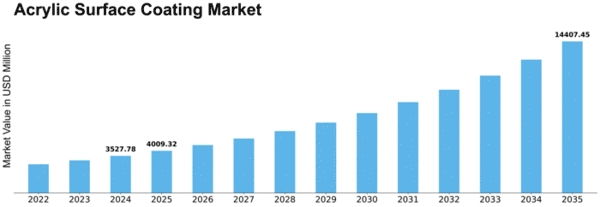

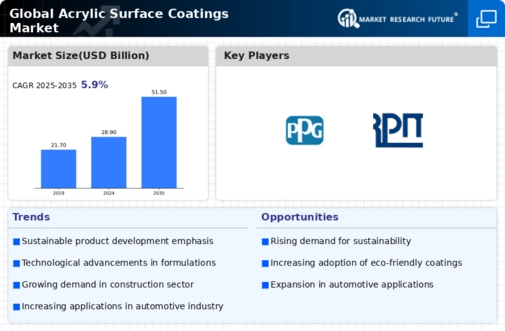
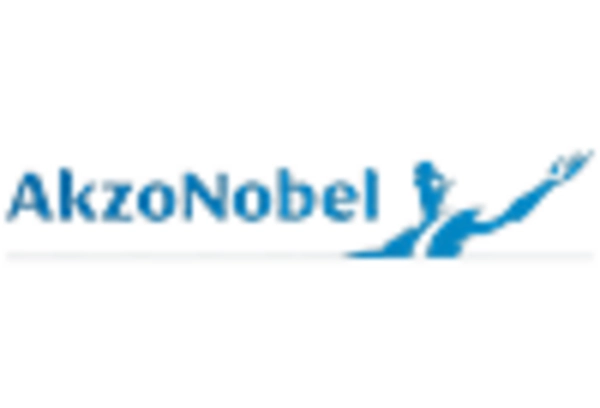
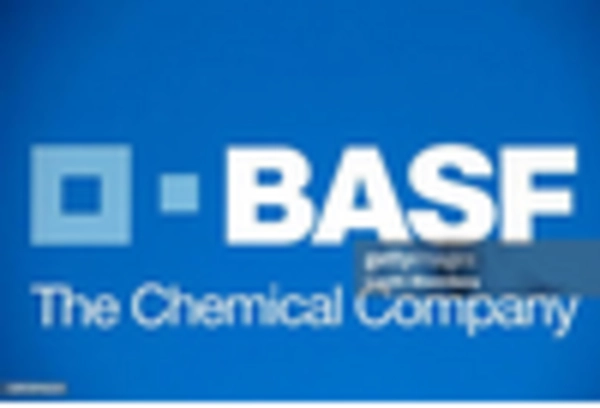
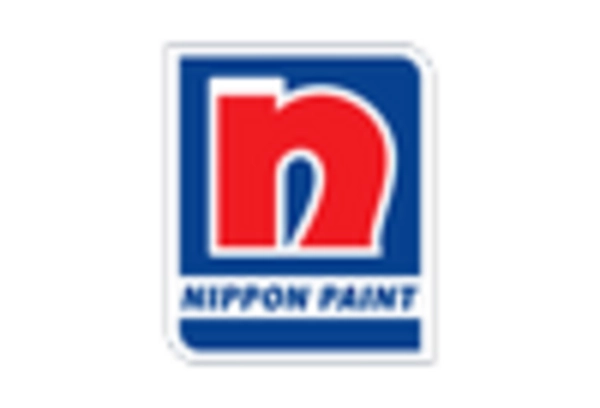
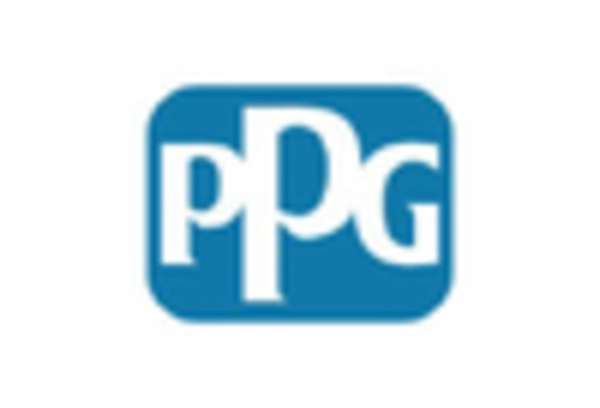
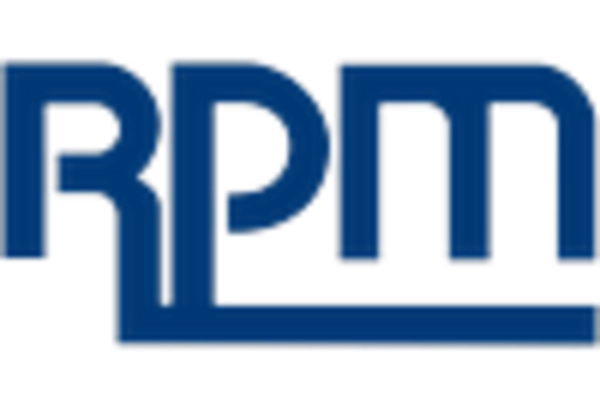
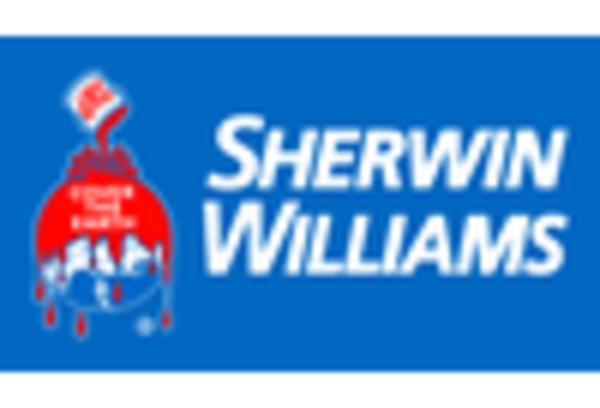









Leave a Comment